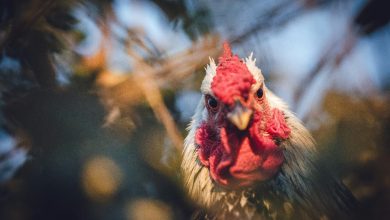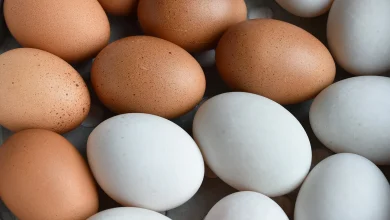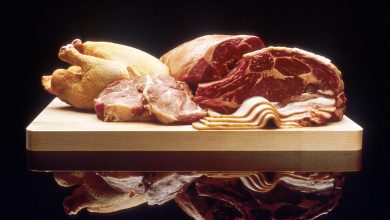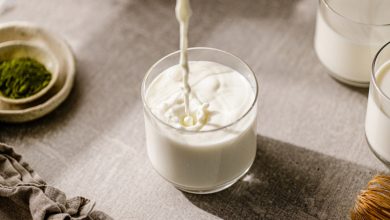Fatty liver hemorrhagic syndrome (FLHS)

Anupam Soni1*, Sharad Mishra1, M.D. Bobade3, Neetu Sonkar1, Sudheer Bhagat1, Upasana Verma1 S.K. Yadav4 and Roshini Hirwani5 College of Veterinary Science and A.H., CGKV, Anjora, Durg (C.G.)-491001 India
Introduction:
Fatty liver hemorrhagic syndrome (FLHS) is a metabolic disorder of layer birds. This condition occurs worldwide and affects all the species of birds. It is characterized by sudden death of birds, heavy fat deposition around the liver along with haemorrhages. Hepatomegaly is most in important features and prone to bleeding lead to death of birds. Fatty liver hemorrhagic syndrome is “the major cause of mortality in laying hens. This condition occurs due to high energy diet and low protein and lack of exercise. It occurs most often in warm, summer months.
Etiology
Excessive energy diet
Lack of exercise
Hereditary
Excessive estrogen
Clinical Findings
Affected birds shows overweight, pale comb, lethargic, laying of egg is slow, excessive fat deposition around the abdomen. Most of the case bird found dead. In blood serum analysis affected bird increased blood levels of estrogen, osteocalcin, and leptin-like protein.
Necropsy lesions
Necropsy reveals that hepatomegaly, liver pale and engorged with fat. Abdomen shows varying degree of blood clots. The damaged liver also lost structural integrity lead to prone for rupture and hemorrhage. The abdominal cavity also having huge amount of unsaturated fat. The ovary become active, at least in the early stages of FLHS, and the metabolic and physical stress associated with oviposition may be factors that induce the final, fatal hemorrhage. Affected birds often have pale combs, either due to reduced egg production or blood loss.
Histopathology
Microscopic examination of liver tissue shows liver cells (hepatocytes) that are grossly distended with fat. There may be hemorrhages present. Fat within the hepatocytes are seen as clear spaces (vacuoles) within the cytoplasm of the hepatocytes. The accumulation of fat within the liver weakens the integrity of blood vessels, leading to hemorrhage .
Diagnosis:
Sign : Fatty liver hemorrhagic syndrome is easy to recognize at necropsy because of the liver hemorrhage and because the liver is enlarged and engorged with fat. This makes the liver friable, and it is difficult to remove each lobe in one piece. The pale yellow color of the liver, although characteristic, is not always specific to FLHS. Normal layers fed appreciable quantities of yellow corn or high levels of xanthophyll pigments will also have a yellow-colored liver but without associated hemorrhages. A number of specific diet ingredients can induce liver hemorrhage but without concomitant accumulation of excess fat. Likewise, feeding rancid fat can cause liver hemorrhage, again without fat accumulation. In birds with FLHS, the liver dry matter is characteristically at least 40% fat.
The degree of FLHS can be described as a poultry liver hemorrhage score, which is usually based on a scale of 1–5:
• 1 = no hemorrhage
• 2 = 1–5 hemorrhages
• 3 = 6–15 hemorrhages
• 4 = 16–25 hemorrhages
• 5 = >25 hemorrhages, as well as a massive, usually fatal, hemorrhage
Fatty liver disorder also impairs calcium metabolism in the bird, thus affecting skeletal integrity and eggshell quality.
Treatment Options:
• Supplementing feed with 6 % oat hulls
• High protein feed (up to 20% protein).
• Adding Choline chloride, Vitamin E, Vitamin B12 and Inositol to their feed.
• Feeding biotin rich foods for proper fat metabolism
• fish meal
• alfalfa meal
• Increase exercise and free ranging
• Limit fatty foods
• The use of L-Tryptophan in the diet can decrease the syndrome
Prevention and control
• To reduce diet density to avoid birds gaining excess weight. Limit energy intake through the use of a lower energy diet and/or changing feed management.
• Replacing dietary carbohydrates with supplemental fat has been shown to reduce the incidence of FLHS as long as the energy level of the diet is not increased
• Supplemental fat depresses synthesis of new fatty acids, so the liver has to produce less fat for the yolk. This reduces the metabolic burden on the liver.
• Use of crumbled or pelleted feed results in greater feed and energy intake than mash feed. Avoid crumb and pellets in flocks susceptible to FLHS.
• Layer diets should contain adequate levels of Vitamin E (50-100I/kg) and selenium (0.3ppm) to ensure adequate levels of antioxidants to prevent tissue rancidity.
• Supplementation with lipotropic agents such as choline (500mg/ kg), methionine (0.1%), and Vitamin B12 help to mobilize fat from the liver, and support recovery in affected hens.
• Calcium deficiency has been associated with FLHS. This can be addressed with the addition of large-particle calcium and Vitamin D to the ration.
• This allows the bird to eat more calcium without over-consuming the energy component of the feed.
• Avoid any form of stress. Heat stress is a particular concern as it can precipitate or accentuate the occurrence of FLHS.
• Feed intake should be monitored, along with increases in body weights and mortality, and decreases in egg production.
• Routine (at least every 30 days) body weight and uniformity checks can help reveal development of excess body weight.
• Less uniform flocks are more likely to contain relatively heavier birds with a greater risk of FLHS. Perform post-mortem examinations of mortality to assess the condition of the liver, and be alert to excess abdominal fat.
• Methionine, choline, inositol, Vitamin B12, biotin, L-trytophan, carnitine, and selenium are essential for proper liver function and fat metabolism.
Name and designations of authors
1. M.V.Sc students, Department of Livestock Production & Management.College of veterinary science & A.H, Anjora, Durg (C.G.)
2. Professor & Head, Department of Livestock Production & Management.College of veterinary science & A.H, Anjora, Durg (C.G.)
3. Ph. D scholar, Department of Livestock Production & Management. College of veterinary science & A.H, Anjora, Durg (C.G.)
4. M.V.Sc students, Department of Veterinary Surgery & Radiology. College of veterinary science & A.H, Anjora, Durg (C.G.)
5. B.V.Sc and A.H. 5th year student College of veterinary science & A.H, Anjora, Durg (C.G.)





This blog about Fatty liver hemorrhagic syndrome (FLHS).
has helped me enormously, is a very good topic. What product
helped me lose weight, I recommend you see here: https://s96.me/fit (or click on the name).
Kiss you All!